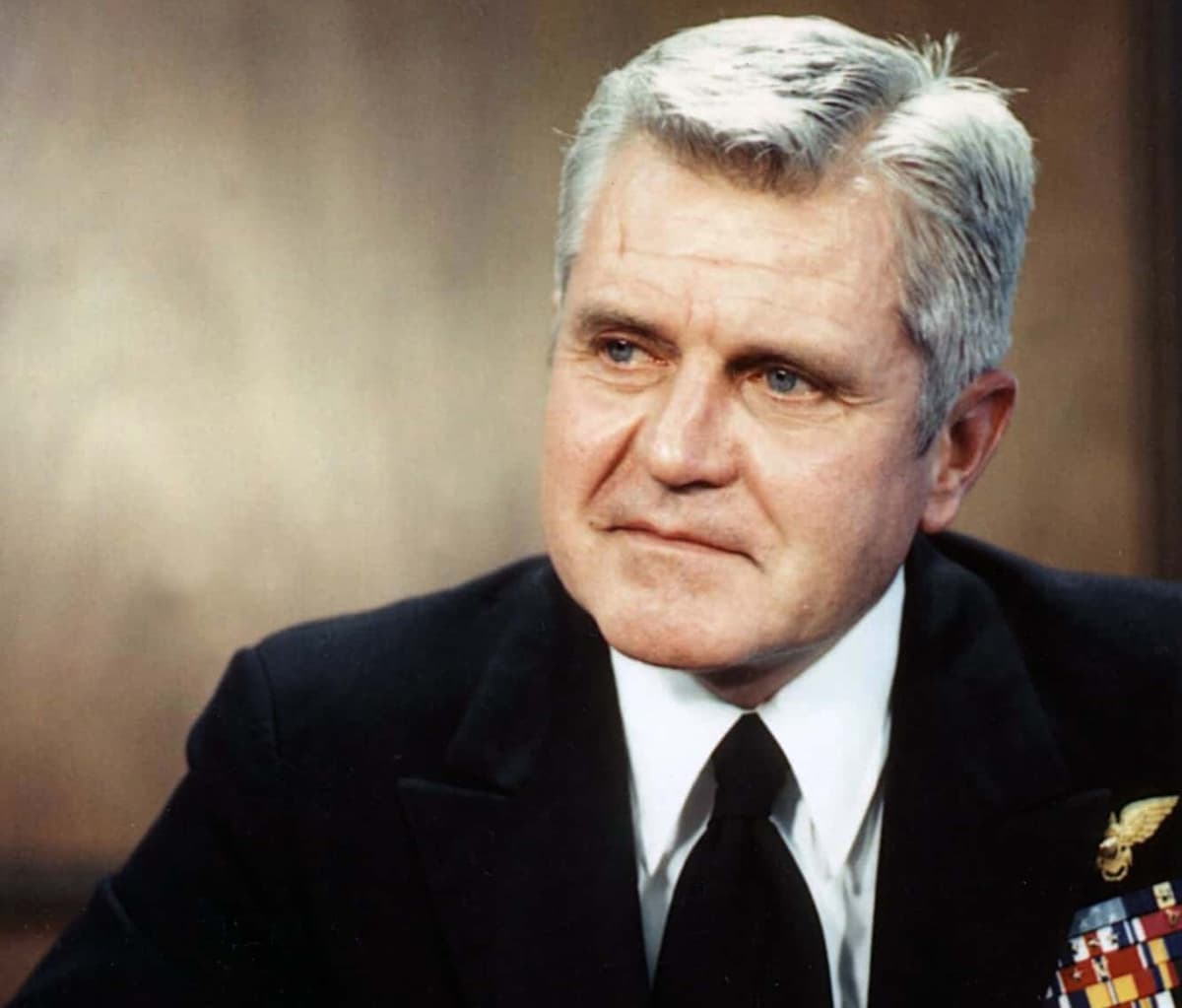James Stockdale
This article is from the archive of The New York Sun before the launch of its new website in 2022. The Sun has neither altered nor updated such articles but will seek to correct any errors, mis-categorizations or other problems introduced during transfer.

On the morning of the day he died, it has been said of a few individuals over the years, he was the greatest man alive, and among Americans this could well be said of Admiral James Stockdale, who died Tuesday at the age of 81. He was awarded the Medal of Honor for his leadership of the American prisoners of war held in Hanoi during the years of the Vietnam War, and his death, coming as America is in the early years of a new war, offers much about which to think.
The Medal of Honor, which is impossible to alloy, is usually awarded for acts that disclose the courage of an individual in a few split seconds – in the time it takes to save the lives of one’s comrades by throwing oneself on a grenade, say, or by leaping from a foxhole to attack an enemy machine-gun nest. Such medals are worth no less for the fact that the character that won them was glimpsed in an instant.
Admiral Stockdale’s courage, however, was disclosed over and over again, and was sustained for the entire span of the seven and a half years he spent in the infamous prison known as the Hanoi Hilton and other dungeons, where he was held four years in solitary confinement and two with his legs clamped in irons. He was a prisoner of one of the most savage enemies America has ever fought. It was Stockdale who invented the code prisoners used to communicate, and he told other prisoners, as Los Angeles Times put it, to defy their captors at every turn and never act like helpless captives.
The Medal of Honor citation refers to Stockdale’s efforts at “self-disfiguration to dissuade his captors from exploiting him for propaganda purposes.” In plain English, what he did was use a wooden stool to beat his face to a pulp so he couldn’t be used in an enemy film. One reason that he is so admired by his fellow prisoners is that, when he inflicted what the citation calls “a near-mortal wound to his person in order to convince his captors of his willingness to give up his life rather than capitulate,” the enemy backed off in its torture and harassment of other Americans it was holding.
Whence Stockdale summoned his enormous courage is one of those mysteries of the human spirit. He was born in Illinois and pursued a career in the Navy. No doubt one of the deep wells of his courage was his marriage to his wife, Sybil, a union that survived his long ordeal and lasted until his death. They wrote a book together, “In Love and War.” The admiral’s own view of himself was as a philosopher, and he wrote of the inspiration he took from the writings of Epictetus and the importance he attached to duty.
Stockdale’s story has never been more relevant than now, when America is in the early years of a new war against an even more savage foe and a new anti-war movement is testing America’s resolve. He has been quoted as voicing doubts about the Tonkin Gulf Incident after which was named the war resolution that passed, almost unanimously, in the Congress. But he fought for his country nonetheless.
Years after being freed, Stockdale presented himself for vice president on Ross Perot’s ticket. He began his campaign by asking, “Who am I? Why am I here?” – only to be mocked by the press as a bumbler who was out of his depth. But his family can take comfort in the fact that generations, even centuries from now, when the individuals who belittled those words are forgotten in the dusts of history, Americans will know exactly who James Stockdale was and exactly why he was here.

